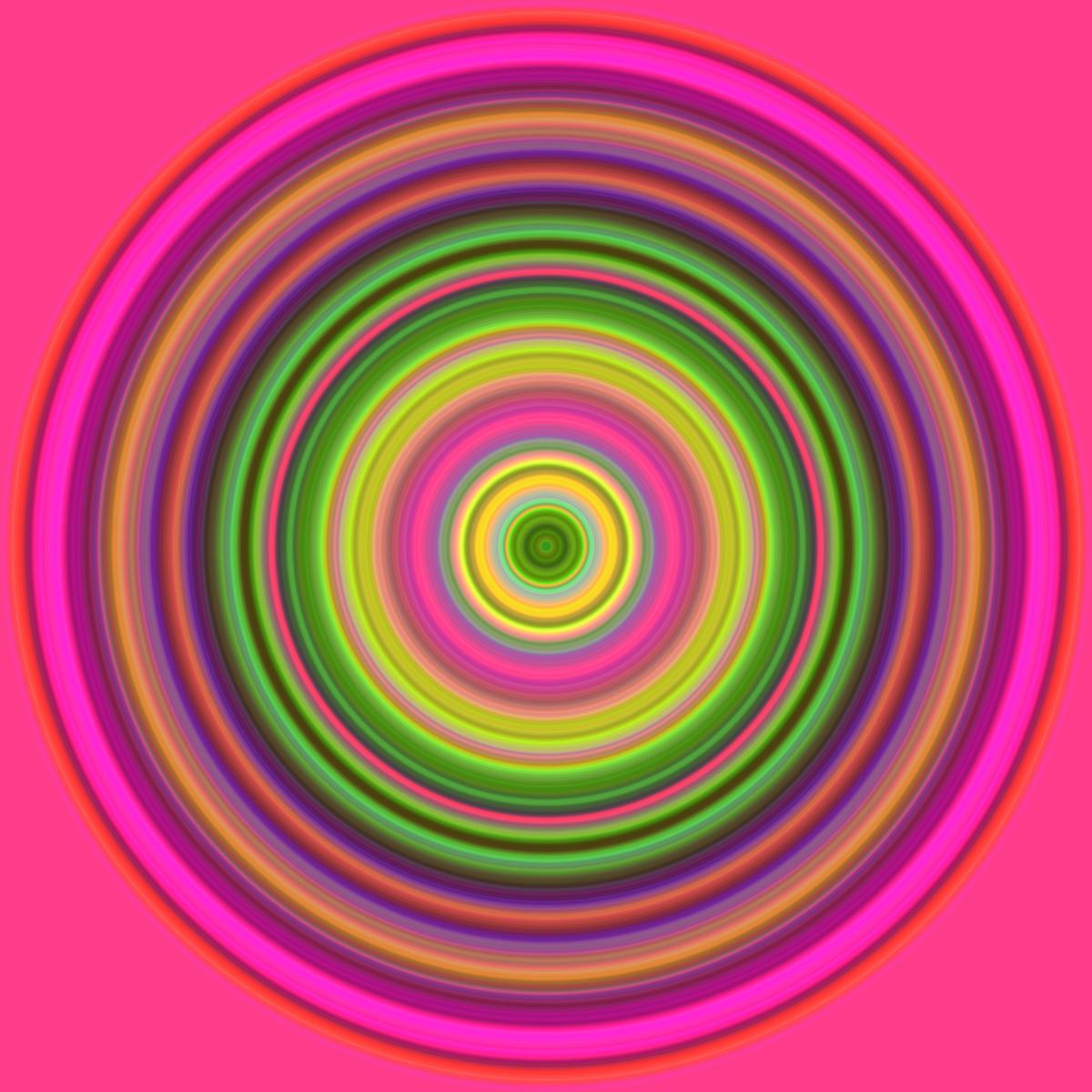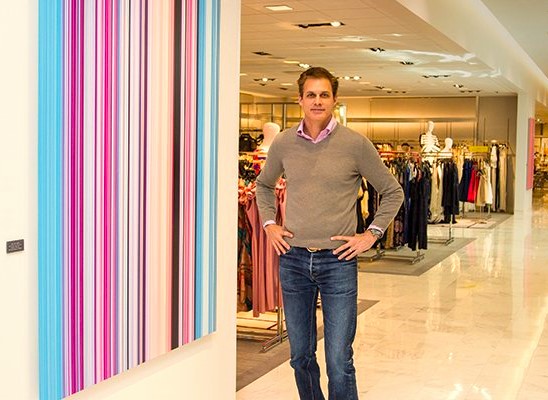Fort Worth’s Hometown Artist John Holt Smith Brings Unmistakable Paintings to Life — See Them at William Campbell Gallery and Neiman Marcus
From Growing Up in an Art Family to a Unique Process
BY Courtney Dabney // 05.14.23John Holt Smith poses next to his Vertical Wildflower Sequence at Fort Worth's Neiman Marcus. (Photo by Courtney Dabney)
While the works of Fort Worth-based artist John Holt Smith have been showcased from California to New York, his Fort Worth fans can catch a glimpse of his artistry in his hometown at William Campbell Gallery ― in an exhibit called Curvature and Flow. It’s on view now through June 10.
If you’ve shopped at Fort Worth’s Neiman Marcus you’ve certainly passed by the artwork of Smith. His pink-hued Vertical Wildflower Sequence and his blue-toned Vertical Swim Sequence are both prominently displayed on the upper level of the store. They call out to each other in many ways. Smith’s works were added to the Neiman Marcus art collection when its store opened in Clearfork back in 2017. Other pieces by Smith are on display at the Neiman Marcus stores in both Dallas and New York.
John Holt Smith has a long relationship with William Campbell Gallery, ever since his first exhibit there in 2005. The works on view at the gallery are all from his Oculus Series, either on linen or aluminum panels. They were inspired by botanicals, exploring the likes of wildflowers, magnolias, stem cells and oranges. A few of the pieces are named after the Grand Hotel Cocumella in Sorrento, Italy and “the flowers I captured on that trip,” he tells PaperCity Fort Worth.
Other familiar large-scale commissions by Smith are on display locally at both the Joule Hotel and The Mansion in Dallas, inside Terminal D at the DFW International Airport and at the Toyota Headquarters in Plano. Soon, his work will grace Fort Worth’s first-ever Crescent Hotel, which is currently under construction along Camp Bowie.

“You only show about every two years,” Smith says. “So you produce artworks for that purpose. But my work also lends itself to commissions. Someone will walk into a show and like a certain piece, but they’d prefer it in a different size to fit a specific space in their home, or in a different color scheme.
“In that way an art collector can participate in the process. They could even choose to have me work from a personal image, like the eye of their spouse.”
John Holt Smith and the Power of Inspiration
Smith, a Fort Worth native, graduated from Fort Worth Country Day School before receiving his a B.F.A. from the University of California at Santa Barbara. His studies took him to both the National Gallery in Washington, D.C. and Florence, Italy.
But his art education began long before that. In a home surrounded by artwork, thanks to Smith’s late stepfather Bill Runyon ― a dentist and a passionate art collector. Runyon surrounded the family with a stellar collection of contemporary and folk art.
Can you imagine shuffling past masterpieces from Warhol, Stella and Calder on your way to the breakfast table? Runyon’s kids actually did.
“Bill would take me on art buying trips with him,” Smith tells PaperCity. “That was a great experience for me, getting to witness the conversation between an artist and his collector.”
Before his death in 2005, Runyon served as trustee, president and chairman of the Modern Art Museum of Fort Worth. While working on this story, I bumped into Runyon’s daughter Beth Gideon, who was having lunch with friends at the museum. Runyon’s son John owns Runyon Arts, an art advising and management service in Dallas. You could say that Bill Runyon successfully passed his passion on to his children.
An Artist’s Process
Smith’s paintings are unmistakable with captivating lines. Many in his Vertical Series are cascading explosions of color and the concentric circles in his Oculus Series become a focused bullseye that draws you deeper in ― the lines seeming to radiate. He takes photographs from nature and distorts them, stretching the color sequence to complete abstraction ― blending science with artistic expression.
In Smith’s words they radiate and vibrate. . . ebb and flow.” Hence the name of his newest exhibition at William Campbell Gallery, Curvature and Flow.

The process began with an up-close image of his wife Sarah’s eye. Smith created an artificial spectrograph through the use of Photoshop. After pinpointing and enlarging one cross section of the photograph, he used the photo-editing program to stretch the image out into uniform lines. He then matches that color sequence and painstakingly paints it onto a giant aluminum panel in acrylic enamel.
To achieve the desired effect, Smith utilizes a floor-to-ceiling moving ruler that he slides back and forth in front of the panel.
“On a typical painting, there may be 1,500 lines of color,” he says. “Some of them are just a hair’s width. That is what creates a vibration to the paintings. It’s time consuming, labor intensive but also meditative.”
More recently, Smith has transitioned to working with oils on linen canvas.
“The newer work is predominately oil on linen,” he tells PaperCity. “I worked with acrylic enamel on aluminum at first because it gave me the effect I was trying to achieve ― clean lines. But you almost couldn’t see the artist’s hand.”
The results are so clean that some even ask if the artwork was a solely digital creation.
“I wanted to get back to where I started, with oils,” Smith says. “There are new issues with time and color. Oils have a tendency to bleed into one another, and it’s more difficult to find a logical stopping point when I’m painting.
It’s a difficult challenge. But fun.”

























_md.jpeg)


